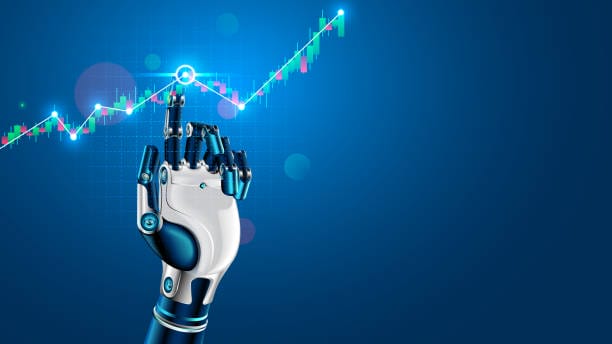Trading models employ Automated Trading to produce a set of transaction orders in the stock exchange or other market. An application software could be tailored to the individual trading plans Entre. It executes the trades through these strategies and rules, which are coded within the piece of software and chosen before buying or selling the commodity in question. With the help of A LS’s, one can, in turn, consider such things as – simple technical analysis, or much more complex mathematical and statistical calculations. The remaining part is left to the system or the automated part, once developed the investor can relax slightly more and watch the system do most of the work.
How Automated Trading Works?

Algorithmic trading is utilized in automated trading and is characterized by entry and exit rules set by the investor. The algorithms of the automated systems can be created with the help of fundamental technical indicators to extend the set of rules. Sometimes, trading platforms are created with ‘wizards’ containing many kinds of technical indicators that an investor can choose involving trading strategies.
Of course, it is also possible to use much more comprehensive strategies that most likely demand more familiarity with the actual platform at hand and its language. This rather Complex strategy will require the trader to very closely with a programmer who will create the program with the strategy in mind that the trader uses.
Building a custom system takes a lot more time and costs more, yet it offers much more freedom and will quite as a rule yield a much higher ROI if done right. The algorithm can be tested on the prior market data so that its performance is known in advance of future outlooks.
Some of the predictions foresee the fact that within the next few years, 90 per cent of business transactions will be executed by the use of automated systems like Margin Trading. Despite the raised number of trades effected through the help of computerised platforms, there are still pitfalls associated with it.
Benefits of Automated Trading Systems
- Possibly, one of the outstanding benefits to be endowed from applying automated trading systems is the fact that emotion is not used in the trading process. Excluding this will ensure that the trader does not have to give in to self-deception and build the respective algorithm.
- The special attribute of traders also helps them not to hesitate in their actions, and not to delay their purchase or sale. It does not tolerate any form of indiscipline at any time, although this is very important during volatile times.
- Automated trading systems also come in handy in that the execution of trades is made faster. Machines can act immediately to signals that meet the algorithm and enable substantially faster trading with more orders to be completed in a shorter amount of time and greater accuracy.
- The computer in turn can follow strategies A, B and C at the same time – something that would be utterly impossible for a human to do. This enables the investor controlling the system to trade more diversely than he/she would have when using a single account.
Drawbacks of Automated Trading Systems
- Trading via Automated trading systems also has its demerits as can be seen below. Thus, contrary to many people’s initial impression, automatic processes are not fully unattended. However, Supervision is required to confirm that automation is working well and that no new failures may have occurred.
- Examples include mechanical breakdown; where the software may stop working or the connection may drop out. Also, what an algorithm does in the case of historical data might not be the same as what it will do concerning future market data. It can lead to unrealistic expectations being set and; hence, massive losses, or failure to meet targets.
Frequently Asked Questions (FAQs)
1. What is an automated trading system?
An automated trading system uses algorithmic trading to execute buy and sell orders on stock markets or other exchanges. These systems follow pre-programmed rules and strategies to make trading decisions, allowing investors to take a more hands-off approach while the computer handles the bulk of the trading activities.
2. How do automated trading systems work?
Automated trading systems operate based on entry and exit rules set by the investor. They use fundamental and technical indicators to create these rules. The system can execute trades at high speed and with precision, adhering strictly to the pre-defined strategy. More complex strategies may require collaboration with a programmer to develop custom algorithms.
3. What are the benefits of using automated trading systems?
The main benefits include the elimination of emotional decision-making, improved speed and accuracy of trade execution, and the ability to manage multiple strategies simultaneously. Automated systems enforce discipline, ensuring that the trading plan is followed precisely without deviations due to emotional impulses.
4. Are automated trading systems completely hands-off?
No, automated trading systems are not entirely hands-off. They require oversight to ensure they are functioning correctly and to address any mechanical failures or unexpected issues, such as software glitches or connectivity problems.
5. Can automated trading systems guarantee profits?
Automated trading systems cannot guarantee profits. While they can be highly effective and efficient, their performance with historical data may not always predict future outcomes accurately. Investors should be cautious of overly optimistic projections and be prepared for potential losses or underperformance.
6. What are the risks associated with automated trading systems?
Risks include mechanical failures, such as software malfunctions or connectivity issues, and the potential for discrepancies between backtested results and real-world performance. These systems require ongoing oversight to mitigate such risks and ensure they operate as intended.












